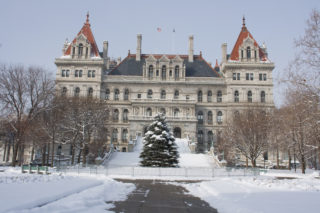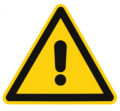PFAS Regulation Updates in New York—Identifying and Examining the Most Recently Impacted Products
 Perfluoroalkyl and polyfluoroalkyl substances, or PFAS, are a group of synthetic chemicals that were first developed in the 1940s and are now widely used in industrial, commercial, and consumer products due to their durability and resistance to water, oil, and heat. However, scientific studies suggest PFAS will slowly break down over time and can build up in the bodies of humans and other animals, causing serious health risks. As a result, numerous countries, including the United States, Canada, and Australia, as well as the European Union, have enacted and continue to pass laws regulating PFAS in a wide variety of products. In addition, more than a dozen states, including the State of New York, have also enacted laws that regulate the use of PFAS in specific categories of products. Moreover, even counties in some states, such as New York, have passed ordinances regulating PFAS-containing products.
Perfluoroalkyl and polyfluoroalkyl substances, or PFAS, are a group of synthetic chemicals that were first developed in the 1940s and are now widely used in industrial, commercial, and consumer products due to their durability and resistance to water, oil, and heat. However, scientific studies suggest PFAS will slowly break down over time and can build up in the bodies of humans and other animals, causing serious health risks. As a result, numerous countries, including the United States, Canada, and Australia, as well as the European Union, have enacted and continue to pass laws regulating PFAS in a wide variety of products. In addition, more than a dozen states, including the State of New York, have also enacted laws that regulate the use of PFAS in specific categories of products. Moreover, even counties in some states, such as New York, have passed ordinances regulating PFAS-containing products.
This blog post will identify product categories in which New York has enacted PFAS regulations and provide a general overview of regulations for each product category. Manufacturers must know what types of PFAS products are prohibited from sale or will soon be banned in the State of New York.
Children’s Products
Title IX of Article 37 of New York’s Environmental Conservation Law, titled “Toxic Chemicals in Children’s Products,” regulates PFAS and other expressly delineated chemicals defined as “chemicals of concern” found in products marketed and sold to persons twelve and under.
Children’s products include toys, car seats, school supplies, personal care products, baby teething and sucking products, products facilitating sleep, relaxation, or the feeding of a child, novelty products, jewelry, bedding, furniture, furnishings, and apparel. The list is non-exclusive, so manufacturers must consult counsel to evaluate whether their products constitute a “child’s product” under the statute.
Two categories of PFAS, (1) Perfluorooctanoic acid (PFOA & related substances) and (2) Perfluorooctyl sulphonic acid and its salts (PFOS), have been included as “chemicals of concern” that are regulated by Title IX.
Title IX Reporting Requirement and PFAS Prohibitions
Every manufacturer who sells or distributes a children’s product that contains “chemicals of concern” in New York must report to the New York State Department of Environmental Conservation (DEC). The report must identify the specific product, the contained chemical, and the chemical’s purpose. To prepare for any further requests for information by the DEC, manufacturers must maintain information regarding the amount of the chemical in the product, the likelihood that the chemical will be released into the environment during the product’s life cycle, and the extent to which product users are likely to be exposed to the chemical. Manufacturers can, however, submit an application seeking a waiver of reporting requirements. In deciding whether to grant a waiver, the DEC will likely consider factors such as the availability of substantially equivalent public information about the contained chemical, similar waivers granted by other states, and the volume of the contained chemical at issue.
Children’s products that contain some types of non-PFAS “chemicals of concern” that are intentionally added, such as tris (1, 3 dichloro-2-propyl) phosphate (TDCPP or TDCIPP), benzene, and asbestos, are currently prohibited from distribution, sale, or offer for sale, with a few exceptions. However, Title IX does not exclude the possibility that additional “chemicals of concern,” including but not limited to PFOA or PFOS, could be banned for distribution, sale, or offer for sale. The Children’s Product Safety Council, established by Title IX, could recommend prohibiting additional types of “chemicals of concern.” Therefore, manufacturers must monitor whether Title IX will be revised to ban more types of “chemicals of concern.”
Pursuant to Title IX, the manufacturers who sell or distribute a children’s product that contains “chemicals of concern” must also notify the persons that offer such children’s product for sale or distribution in the State of New York.
Finally, the statute provides that the DEC can impose regulations to ensure enforcement of the statute’s provisions.
Firefighting Activities
Chapter 20, Article 26 of New York’s General Business Law restricts the sale and use of firefighting equipment that contains PFAS chemicals. Additional PFAS provisions in Article 26 specify that:
- No foams designed to prevent or extinguish ignitable liquid fires, also known as aqueous film-forming foam (AFFF) or Class B firefighting foam, that contain PFAS can be used for training purposes.
- In the State of New York, if these foams contain intentionally added PFAS chemicals, they cannot be manufactured, knowingly sold, offered for sale, distributed for sale, or distributed for use. Exemptions apply only in limited circumstances, such as approval by the Office of Fire Prevention and Control for suppressing or preventing an ignitable liquid fire or adherence to federal law or regulations.
- A manufacturer or seller of firefighting personal protective equipment containing PFAS chemicals must also provide a written notice to the purchaser at the time of sale. The written notice must include a statement acknowledging the addition of PFAS chemicals and the reason for their inclusion.
Each violation of the above PFAS regulations will result in a civil penalty not to exceed $5,000 for each violation in the case of a first offense. However, repeat violators will be subject to a civil penalty not to exceed $10,000 for each repeat offense.
Apparel
New York’s regulation of apparel manufactured with intentionally added PFAS is the latest in PFAS regulations on products. Taking effect on January 1, 2025, the subject regulation is contained in Section 21, Title I of Article 37 of New York’s Environmental Conservation Law. The scope of regulation will be enlarged over time, but the upcoming iteration of the regulation specifies that:
- After January 1, 2025, no person shall sell or offer for sale in the State of New York any new, not previously used, apparel containing PFAS as intentionally added chemicals.
- Commencing no later than January 1, 2027, no person shall sell or offer for sale in the State of New York any new, not previously used apparel containing PFAS at or above a level determined by the DEC.
- On or after January 1, 2028, no person shall sell or offer for sale in the State of New York any new, not previously used, outdoor apparel for severe wet conditions containing PFAS: (a) at or above a level determined by DEC; or (b) as intentionally added chemicals.
Under the subject statute, apparel includes “undergarments, shirts, pants, skirts, dresses, overalls, bodysuits, vests, dancewear, suits, saris, scarves, tops, leggings, leisurewear, formal wear, outdoor apparel, onesies, bibs, and diapers.” However, the statute explicitly excludes professional uniforms for protection from health or environmental hazards, including personal protective equipment, from regulation because they are not considered “apparel” for regulatory purposes.
If sellers can show that they relied in good faith on a manufacturer’s written assurance that their apparel meets the requirements of this new law, they will not be held in violation of this PFAS ban on apparel. First-time violators of the PFAS regulations on apparel will be liable for fines not exceeding $1,000 for each day of the continuing violation. Second-time violators will be liable for penalties not exceeding $2,500 for each day of the continuing violation.
Manufacturers should expect to receive requests from vendors certifying that their products do not contain intentionally added PFAS or exceed thresholds for products with PFAS byproducts.
Food Packaging
Under Section 9, Title II of Article 37 of New York’s Environmental Conservation Law, no person shall distribute, sell, or offer for sale in the State of New York food packaging containing PFAS substances as intentionally added chemicals.
For this regulation, “intentionally added chemical” means a chemical in a product that serves an intended function in the product component. “Food packaging” means a package or packaging component intended for direct food contact and is comprised, in substantial part, of paper, paperboard, or other materials originally derived from plant fibers.
First-time violators of the PFAS regulations on food packaging will be liable for fines not exceeding $10,000. Second-time violators will be liable for fines not exceeding $25,000 for each violation.
Carpets
PFAS regulation on carpets, which is now part of Section 13, Title XXXIII of Article 27 of New York’s Environmental Conservation Law, is not yet in effect. Still, it would help the manufacturers to prepare in advance.
On or after December 31, 2026, no carpet sold or offered for sale in the State of New York shall contain or be treated with PFAS substances for any purpose. For this regulation, “carpet” includes but is not limited to “a commercial or residential broadloom carpet, modular carpet tiles, artificial turf, a pad or underlayment used in conjunction with a carpet.” However, “carpet” does not include “handmade rugs, area rugs, or mats.” “PFAS substances” are “a class of fluorinated organic chemicals containing at least one fully fluorinated carbon atom.”
Future violators of the PFAS regulations on carpets will be liable for fines not exceeding $500 each day of the continuing violation.
Future PFAS Regulations
New York lawmakers will likely continue to expand the scope of PFAS regulations. In March 2023, members of the New York Senate introduced Bill S5648C. This proposed legislation is consistent with similar legislation in other states and Canada.
According to the amended version of Bill S5648, no person shall sell or offer for sale in the State of New York any covered product that contains regulated PFAS. “Covered product” will include “textile articles, rugs, fabric treatments, cookware, ski waxes, architectural paints, children’s products, cleaning products, anti-fogging sprays, and wipes of certain covered products. “Regulated PFAS” means (1) intentionally added PFAS or (2) PFAS at or above a level established by the DEC, which is the lowest level measured in total organic fluorine that can feasibly be achieved.
Furthermore, Bill S5648 requires manufacturers of “covered products” to issue a certificate of compliance evidencing that the covered products do not contain any regulated PFAS. It also gives the DEC the authority to order manufacturers to provide laboratory test results or notifications if it has reason to believe that a covered product contains controlled PFAS and is being sold in violation of PFAS regulations. However, the sale or resale of used “covered products” that contain regulated PFAS is not prohibited.
Bill S5648 passed the Senate in June 2024, but the state’s legislative session ended before passage in the New York State Assembly. However, immediately after the 2025-26 legislative session commenced, New York’s state senators introduced an identical bill, renamed Bill S187.
Manufacturers should monitor the progress of this bill, which will significantly enlarge the scope of products subject to PFAS regulations if passed, as well as similar legislation already enacted or progressing in other states.
This article has been published in the April 2, 2025, posting of CLM Magazine.






